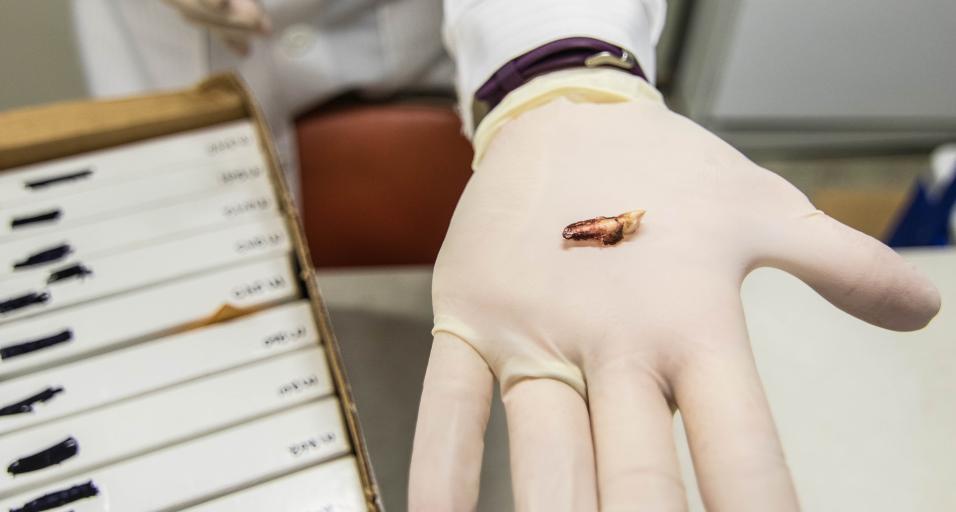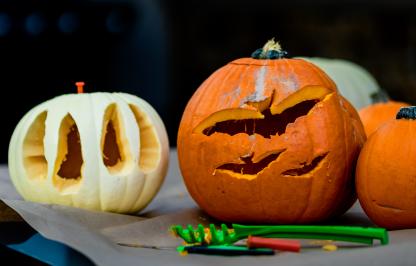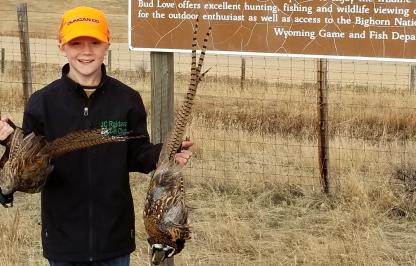The Wyoming Game and Fish Department is asking select hunters statewide to donate teeth from their harvested mule deer, white-tailed deer, elk, moose, bison, mountain lions, black bears and bobcats. Wildlife managers can learn the ages of harvested animals from teeth, and that information is important for managing wildlife.
“It’s one source of important data collected from hunters that helps wildlife managers to assess how hunting seasons affect the population,” said Miranda Strand, tooth aging coordinator for Game and Fish. “It is amazing to know that we can learn the age of an animal from one little tooth.”
Wildlife managers pre-determine hunt areas that will be analyzed each year for certain species. In these areas, local Game and Fish personnel focus sampling efforts by collecting teeth at check stations or request teeth from hunters who receive mailed tooth boxes. Hunters with a license for one of these areas are chosen randomly using the license database, and only a selected few will receive a tooth box. Those who provide teeth can use their license number to see the animal’s age online starting the end of February for mule deer, white-tailed deer and moose, and March for elk. Bison ages are posted mid-April. Other species are available later in the year.
Hunters who do not receive a tooth box but want their trophy or big game harvest aged can for a fee of $25-$30 per animal, depending on the species. Contact the tooth aging coordinator at 307-721-1926 for additional information.
Certain teeth are preferred for aging for different species. Game and Fish needs both first incisors for mule deer, white-tailed deer, elk, moose, bison and other ungulate species.To help, Game and Fish has instructions that show how to pull teeth. Mountain lions and black bears are aged using the premolars; canines are aged from bobcats. For proper tooth extraction, it is suggested to have Game and Fish personnel extract teeth from mountain lions and black bears.
“The best teeth have the most intact root tip,” said Strand, “If the root is cut or broken, it will be more difficult to age or we will be unable to age it at all.”
Teeth are analyzed at the Wyoming Game and Fish Wildlife Forensic and Fish Health Laboratory using a technique called cementum annuli analysis tooth-aging.
“This aging technique is based on annual addition of cementum, which is the specialized calcified substance deposited on roots of teeth,” says Strand. “Layers of cementum are called annuli, and the annuli are counted and the age of the animal is determined. This method is similar to counting rings on a tree.”
In addition to teeth collected annually from hunter harvests, teeth are also collected by Game and Fish personnel from wildlife captured for research projects and relocations, as well as, winter mortalities and road killed animals. Once compiled, the data are part of the Game and Fish’s Annual Job Completion Reports that details information about the herds in the state. Wildlife managers use this data to analyze age classes to make sound management decisions and to provide information about population dynamics.
In 2017, there were 2,518 total teeth processed from nine different species in Wyoming. The lab is expected to process more for 2018 with an increased focus on sampling deer for chronic wasting disease.
Hunters help manage herds through tooth aging program
Sara DiRienzo (307-777-4540)



